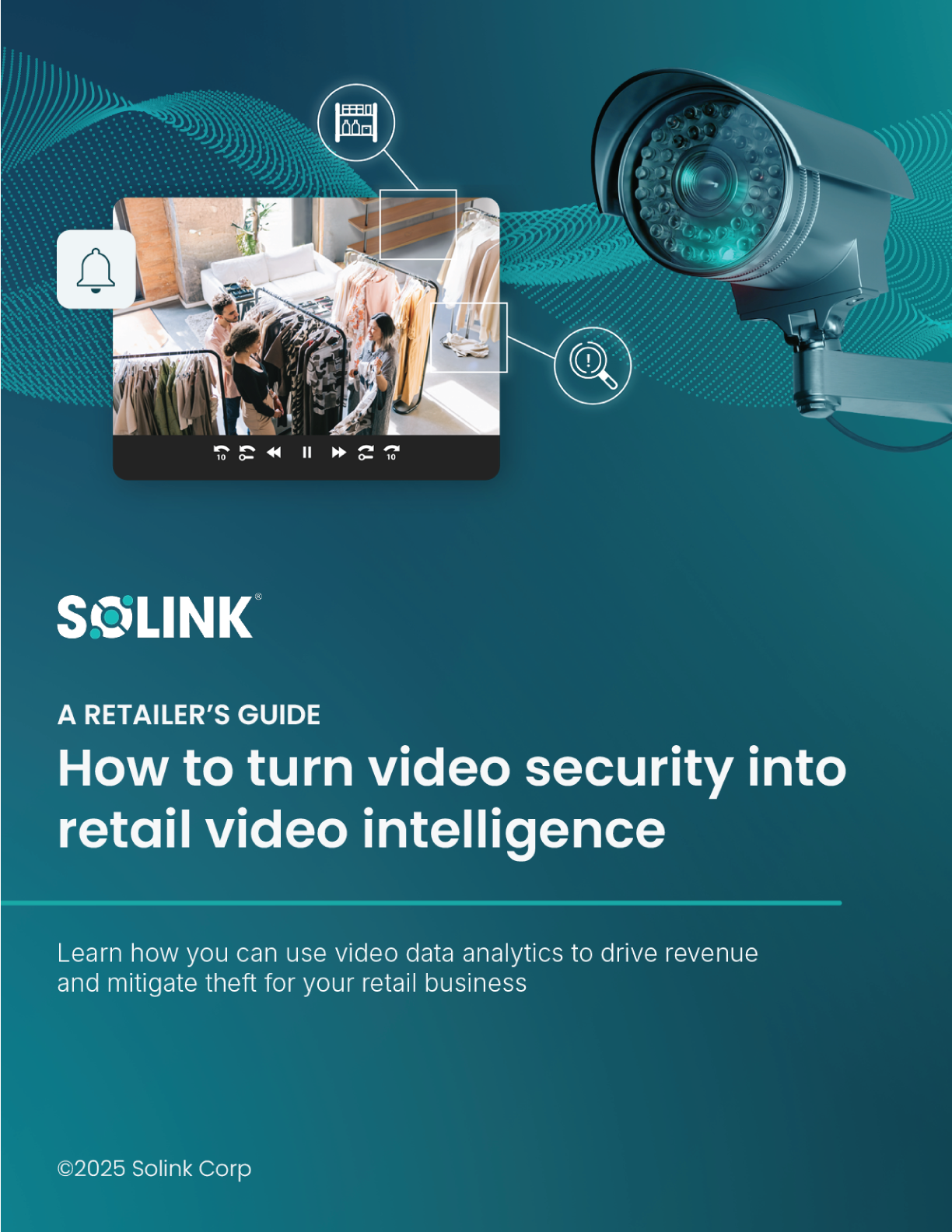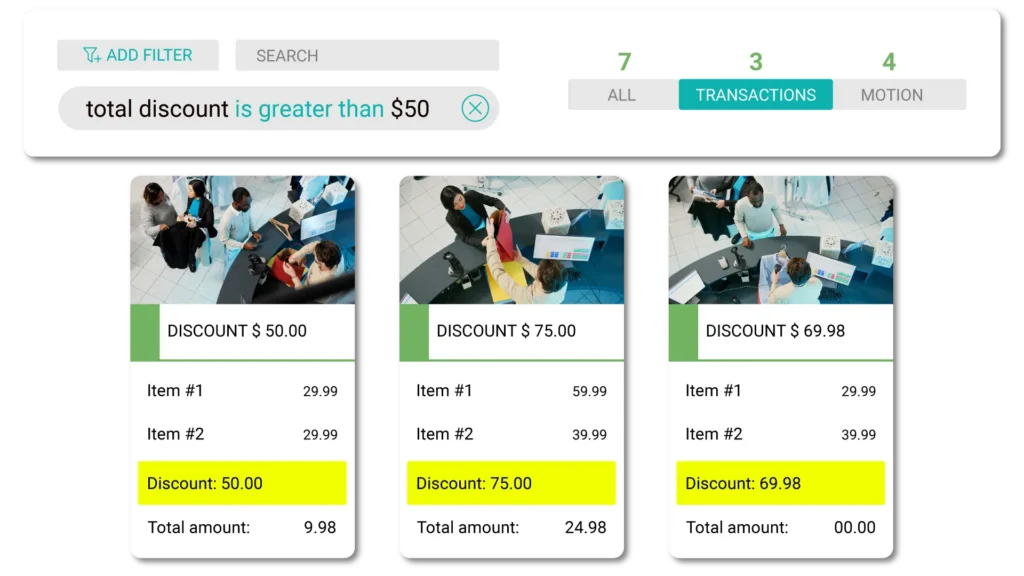Retail shrink drains your profits without you even realizing it. From theft to administrative errors, this invisible revenue loss adds up fast. According to the National Retail Federation, shrinkage costs the industry billions every year—and it’s not slowing down.
The good news? Shrinkage isn’t inevitable. With the right strategies, tools, and processes, you can take control and protect your bottom line. In this article, we’ll break down what retail shrinkage really is, the common causes, and how you can prevent it in your business.
To see how Solink can help with retail shrinkage, sign up for a demo today.
Table of Contents
ToggleWhat is retail shrinkage?
Retail shrinkage is the loss of inventory that occurs before products can be sold. It represents the gap between the inventory you should have (based on purchases and deliveries) and what you actually have available for sale. Shrinkage can result from theft, human error, damage, or supplier fraud.
Why is shrinkage a big concern?
Shrinkage eats directly into profits. Every lost item is revenue you’ll never recover—yet the operational costs of stocking, storing, and managing that inventory remain. Shrinkage doesn’t just hurt your bottom line; it also impacts inventory accuracy, making it harder to meet customer demand and maintain trust. For businesses with thin margins, even small levels of shrinkage can be the difference between thriving and struggling.

How to turn video security into retail video intelligence

This guide will show you how you can turn your security video feed into a business data tool that drives ROI. Tracking store performance, training teams, optimizing labor, and catching revenue-killers before they spiral out of control.
We call it vision intelligence.
Fascinating (and scary) Retail shrinkage statistics
Retail shrinkage isn’t just a minor inconvenience—it’s a massive, growing threat to businesses worldwide. The numbers are staggering and paint a clear picture: inventory losses are climbing, theft is evolving, and organized crime is becoming more brazen. Here’s a closer look at the data behind this multi-billion-dollar problem and why it demands urgent attention.
$112.1 Billion Lost in 2022: The National Retail Federation (NRF) reported that retail shrinkage amounted to $112.1 billion in 2022, with an average shrink rate of 1.6%, up from 1.4% in 2021. (National Retail Federation)
Organized Retail Crime (ORC) Surge: Retailers have observed a 26.5% increase in ORC incidents, with over 81% noting a rise in associated violence and aggression. (National Retail Federation)
Global Impact: Worldwide, retail shrinkage is projected to reach $150 billion annually by 2025, underscoring the global nature of this challenge. (World Metrics)
Theft as a Major Contributor: Theft, both internal and external, accounts for approximately 66% of retail shrinkage, highlighting the need for robust loss prevention strategies. (InVue)
To see how Solink can help keep you safe from organized retail crime, sign up for a demo today.
Prime examples of shrink in retail
Retail shrinkage comes in many forms, often hiding in plain sight. Here are common examples and how they occur:
1. Employee theft
- Taking merchandise or cash from the store.
- Misusing discounts or refunds to steal money or goods.
- Under-ringing items for friends or family during checkout.
2. Shoplifting
- Customers hiding products in bags, clothing, or strollers.
- Switching price tags to pay less.
- Walking out with items in plain sight (known as “grab and go”).
3. Organized retail crime (ORC)
- Coordinated groups stealing large quantities of goods to resell online or through third parties.
- Using fake receipts for fraudulent returns.
- Smuggling items through hidden compartments in vehicles.
4. Vendor fraud
- Suppliers overbilling or short-shipping inventory.
- Delivering damaged goods that can’t be sold.
5. Administrative errors
- Mistakes in inventory counts, pricing, or data entry.
- Mislabeling products, leading to undercharged sales.
6. Damage or spoilage
- Items breaking during stocking or while on display.
- Perishable goods expiring before they’re sold.
7. Cyber fraud and scams
- Hackers stealing gift card balances or customer payment data.
- Phishing scams targeting employee access to registers or systems.
By understanding these types of shrinkage and their causes, retailers can identify vulnerabilities and implement solutions to minimize losses.
Strategies to reduce retail shrinkage
An important first step in dealing with retail shrink is to calculate what the losses are and where they might be coming from:
- Are they operational errors?
- Have there been mistakes with paperwork?
- Is it the result of organized retail crime (ORC) or shoplifters?
- Is it coming from a place where it is probably internal theft?
Missing product off a shelf might be due to a shoplifter, but missing merchandise that was under lock and key is more likely to be due to an employee. Here are the best ways to go about reducing retail shrinkage:
Invest in cloud video security
Modern cloud-based video security systems are one of the most effective tools for reducing shrinkage. These systems offer real-time monitoring, advanced analytics, and seamless integration with other business data, allowing retailers to identify and address suspicious behavior quickly. Unlike traditional systems, cloud video solutions provide remote access, making it easier to keep an eye on multiple locations and review footage when incidents occur.
Train employees on loss prevention
Educating staff about shrinkage and how to spot red flags is critical. Employees should be trained to recognize behaviors associated with theft, ensure proper procedures for handling returns and cash, and understand the importance of accurate inventory management. Empowering employees with knowledge helps create a proactive and vigilant workforce.
Implement inventory management technology
Using advanced inventory tracking systems can significantly reduce errors and help identify discrepancies. These tools provide real-time updates on stock levels and can alert managers to issues like mismatched records, missing items, or overstocking—common sources of shrinkage.
Strengthen physical security measures
Adding visible deterrents like anti-theft tags, locked display cases, and enhanced lighting in high-risk areas can discourage theft. Placing security personnel strategically throughout the store also helps to reduce shoplifting and organized retail crime incidents.
Conduct regular audits and spot checks
Frequent audits ensure that inventory records match physical stock, while random spot checks discourage employee theft and uncover vendor fraud. These practices also help identify patterns in shrinkage and pinpoint areas needing improvement.
Establish clear return and refund policies
Having clear, consistent return policies reduces the risk of fraudulent returns. Require receipts for all returns, and use systems that track customer returns to flag patterns that might indicate abuse.
Leverage data analytics
Modern analytics tools can uncover patterns and trends in shrinkage, such as identifying high-theft products or vulnerable times of day. By analyzing this data, retailers can adjust staffing, improve processes, and focus security efforts on their most pressing vulnerabilities.
Why Solink is the best way to reduce retail shrinkage
Retail shrinkage demands solutions that are both powerful and easy to use, and that’s where Solink stands out. Solink integrates your security cameras with your point-of-sale (POS) and other business systems, creating a seamless way to track, review, and act on potential losses. By combining video footage with transaction data, Solink helps you uncover the root causes of shrinkage—from employee theft to organized retail crime—faster than ever.

One of Solink’s key advantages is its intelligent video search capabilities. Traditional security systems require hours of manual review, but Solink simplifies the process. You can search for specific transactions, events, or even motion in high-risk areas, like a stockroom or cash register. This allows you to quickly identify suspicious activity and take immediate action.
Solink also empowers your team to be proactive with real-time alerts. For example, you can set up notifications for unusual activities, such as a sudden surge in no-sale transactions or repeated voids. These insights enable managers to respond in the moment, preventing losses before they escalate.
Beyond its technical features, Solink is scalable and user-friendly, making it a fit for businesses of all sizes. Whether you manage a single location or a chain of stores, Solink’s cloud-based system allows you to monitor your business remotely, ensuring consistency and security across the board. With its robust analytics and ease of use, Solink doesn’t just reduce shrink—it transforms how retailers approach loss prevention.
Investing in Solink means more than safeguarding your bottom line. It gives you peace of mind, streamlines operations, and enhances your ability to deliver a better experience for customers and employees alike. When it comes to retail shrinkage, no other system offers the same combination of visibility, control, and efficiency.
